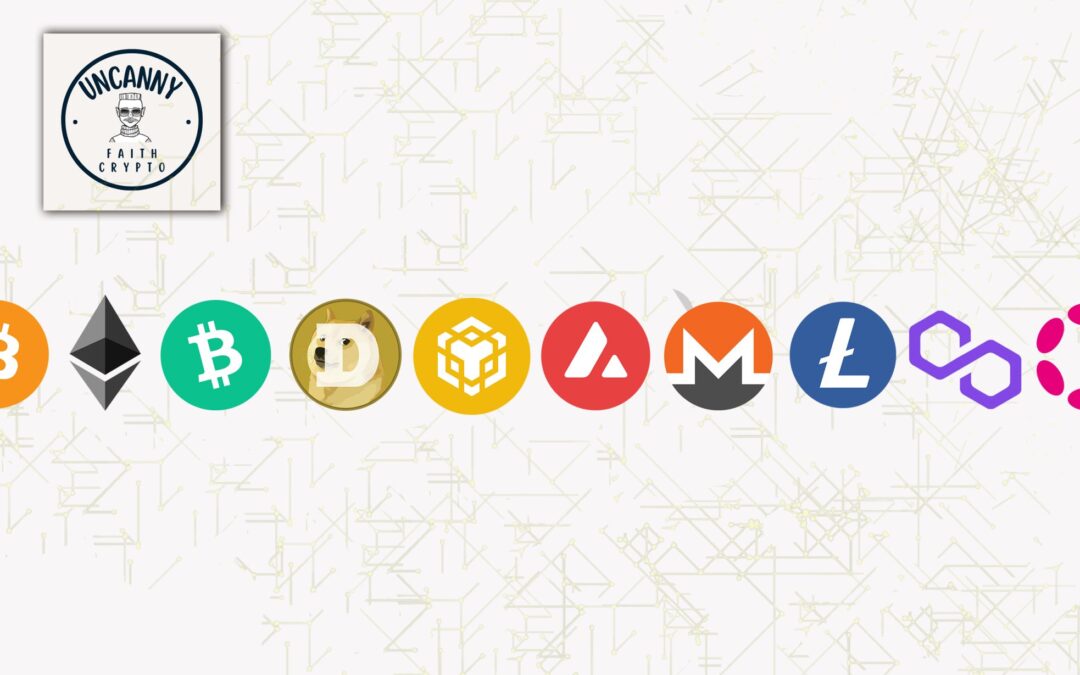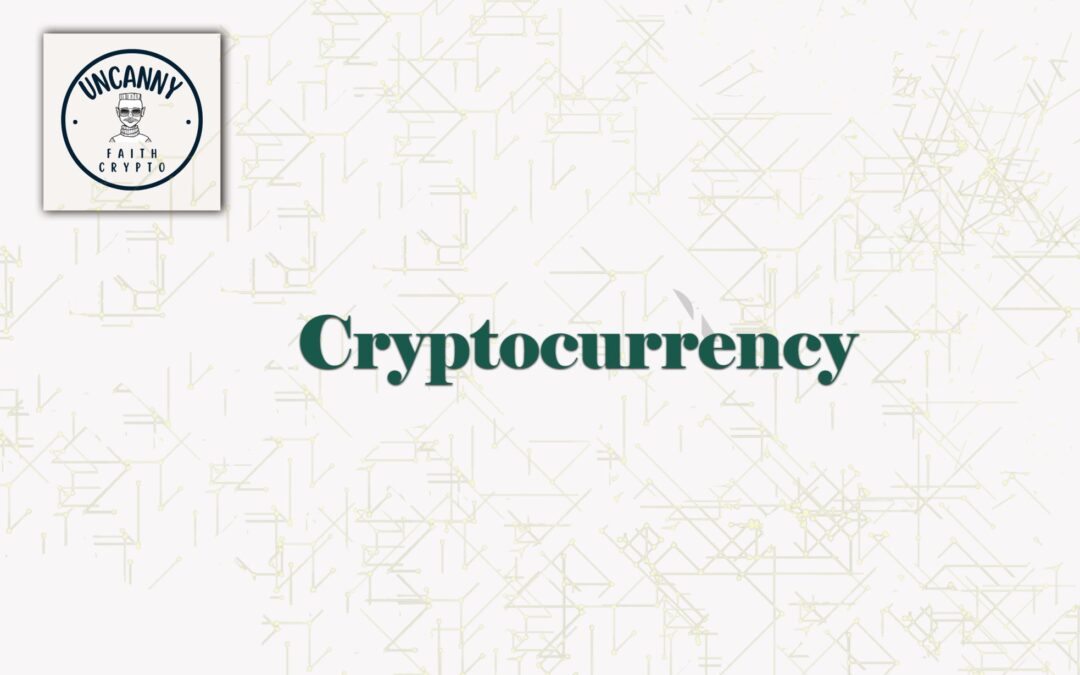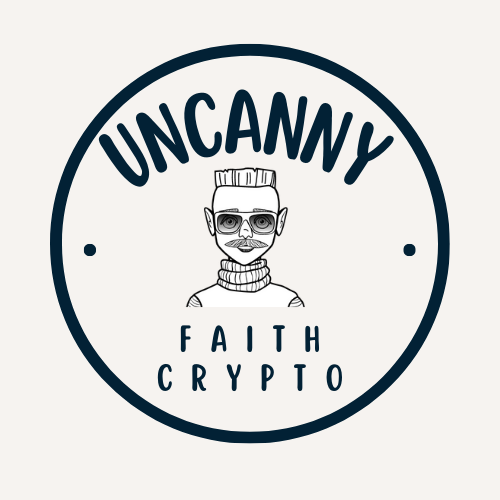
by uncannyfaith | Jan 1, 2025 | Cryptocurrency news and updates
Vitalik Buterin Donates 50 ETH to Support Tornado Cash Developer Roman Storm’s Legal Defense
Vitalik Buterin, co-founder of Ethereum, has donated 50 ETH (approximately $170,000) to aid the legal defense of Roman Storm, a developer associated with the Tornado Cash platform. This contribution was confirmed by Storm on December 31 and serves as another significant gesture by Buterin in advocating for privacy rights and open-source development within the cryptocurrency sector.
A Message of Gratitude
Roman Storm expressed immense gratitude for Buterin’s support during this challenging time. In a public statement, Storm shared his appreciation, highlighting Buterin’s commitment to leadership and advocacy for developers in the crypto space:
“Immense gratitude to Vitalik Buterin for his generous donation to my legal defense fund. Your unwavering support and leadership by example continue to inspire us all. Thank you for standing with me during this difficult period.”
Legal Defense Fund Progress
Storm also provided an update on the status of his legal defense fund. Thus far, the fund has raised $640,061—approximately 33% of the $2 million target required for his legal expenses. The funds are being used to defend Storm against serious charges he faces in the United States.
The Legal Battle
Roman Storm is set to appear in a U.S. court on April 14, where he faces allegations of money laundering and sanctions violations related to his involvement with Tornado Cash, a well-known crypto mixing platform. These accusations focus on potential misuse of the platform to evade financial regulations.
Storm’s legal team recently filed a motion to dismiss the charges, citing key developments in similar cases. They argue that a recent court decision questioning the U.S. Treasury’s ability to sanction immutable smart contracts undermines the claims against Storm. According to his lawyers, Tornado Cash operates via decentralized, autonomous smart contracts, which function independently and without individual oversight. This lack of direct control, they contend, weakens the foundation for accusations of knowingly violating the International Emergency Economic Powers Act (IEEPA).
Misrepresentation of Decentralization
The defense team asserts that the charges against Storm misrepresent the decentralized nature of Tornado Cash. By design, the platform’s smart contracts automatically process transactions without human input. This system, they argue, makes it impossible to attribute any malicious activity on the platform to Roman Storm specifically. Given this decentralization, Storm’s lawyers maintain that the prosecution lacks evidence to prove intent or knowledge—criteria needed to validate claims of money laundering or unauthorized money transmission.
Community Support for Developers
The case has sparked widespread discussion within the crypto community regarding the rights of developers who create open-source tools. Many crypto advocates view the case against Storm as a broader attack on digital privacy rights and decentralized platforms. Greg Lang, founder of a blockchain development company, summarized this sentiment:
“Creating and publishing open-source privacy tools is protected speech—not an act in furtherance of any criminal conspiracy that uses the software.”
Looking Ahead
Roman Storm’s legal battle continues to draw attention from the crypto and Web3 communities, as many consider the case a crucial moment for the future of decentralization and privacy. Vitalik Buterin’s donation reinforces his ongoing support for open-source innovation and the belief that technological tools should not be criminalized based on their misuse by third parties.
As Storm prepares for his court trial, the crypto world will undoubtedly follow this case closely, with the outcome likely having far-reaching implications for decentralized platforms and the development of blockchain technology.
Tags: Vitalik Buterin, Ethereum, Tornado Cash, Cryptocurrency Privacy, Legal Defense Fund, Web3

by uncannyfaith | Jan 1, 2025 | Blockchain technology, crypto, Cryptocurrency, Cryptocurrency news and updates, Investing and trading tips
Blockchain is undoubtedly a catalyst for change, revolutionising industries with promises of transparency, decentralisation, and unparalleled security. Among the many blockchain platforms vying for dominance, EOSIO has carved out a unique position. Known for its speed, scalability, and customisability, EOSIO is increasingly recognised for enabling developers to build decentralised applications (dApps) with greater efficiency.
As we look ahead to 2025, the blockchain ecosystem is poised for monumental growth, and EOSIO is expected to play a vital role in transforming how industries operate. This article explores the key trends shaping EOSIO’s future and offers an in-depth analysis of its influence on the broader blockchain landscape.
What is EOSIO?
For the uninitiated, EOSIO is an open-source blockchain platform developed by Block.one, designed for the deployment and operation of high-performance decentralised applications. Unlike first-generation platforms like Bitcoin, which focuses on peer-to-peer digital currency, or Ethereum, which pioneered smart contracts, EOSIO sets itself apart by prioritising enterprise-grade scalability, low latency, and high throughput.
What makes EOSIO particularly exciting is its innovative consensus algorithm—Delegated Proof of Stake (DPoS). This mechanism offers a faster and more energy-efficient alternative to traditional Proof-of-Work (PoW) systems, thereby addressing scalability issues while reducing environmental impact.
Now that we have the basics covered, let’s dive deep into how EOSIO is evolving and the trends that will shape its future.
Why is EOSIO Ideal for 2025 and Beyond?
The blockchain industry is evolving at a blistering pace. To stay relevant, platforms need to meet the increasing demands for stability, scalability, and adaptability. EOSIO, with its robust infrastructure, is uniquely positioned to thrive in 2025. Here’s why:
1. Scalability: The Crown Jewel of EOSIO
While many blockchain platforms face bottlenecks due to scalability, EOSIO’s architecture allows for thousands of transactions per second (TPS), making it one of the fastest blockchain systems. As industries like finance, healthcare, and supply chain expand their blockchain use cases, platforms that can support large-scale adoption will lead the pack.
EOSIO’s sharding technology—a process that splits databases into smaller, more manageable pieces—is likely to evolve further by 2025. This progression could make EOSIO even more efficient, handling millions of transactions per second without compromising security.
2. Enhanced Developer Ecosystem
The EOSIO platform is already a favourite amongst developers due to its user-friendly toolkit, including the EOSIO SDKs (software development kits) and support for multiple programming languages, such as C++. By 2025, these features are expected to become even more robust and refined.
Another key development on the horizon might be integration with AI and machine learning tools. This would allow developers to create smarter dApps that utilise predictive analytics, automated processes, and data-driven decision-making—all on the blockchain. Consequently, EOSIO will likely attract a surge of innovative projects, further solidifying its position in the blockchain space.
3. Real-World Applications of EOSIO
The future of blockchain doesn’t exist in a silo—it integrates deeply with the real economy, bringing practical solutions to age-old problems. By 2025, EOSIO is expected to dominate several sectors due to its efficiency and low operational costs.
-
Finance and Payments:
EOSIO’s high throughput and low transaction fees make it ideal for financial institutions looking to modernise payment systems. With the advent of Central Bank Digital Currencies (CBDCs), EOSIO-backed platforms could become the backbone for implementing fast and secure transaction systems across national borders.
-
Supply Chain Management:
Transparency remains a crucial pain point in supply chain logistics. EOSIO’s immutable ledger can track products from origin to destination in real-time, drastically reducing fraud, theft, and inefficiencies. Expect more enterprises to adopt EOSIO in 2025 for seamless operations.
- Gaming and NFTs:
The NFT and gaming industries are booming. With its fast transaction speeds, the EOS blockchain is already a powerhouse for gaming dApps and NFT issuance. By 2025, EOSIO is likely to see more cross-chain interoperability, further expanding its influence in the digital collectibles market.
Key Trends Shaping EOSIO and Blockchain Technology in 2025
1. Green Blockchain Initiatives
As the global concern for climate change intensifies, energy-efficient blockchain solutions will gain more traction. EOSIO’s Delegated Proof of Stake (DPoS) is far more environmentally friendly than traditional Proof of Work systems.
By 2025, governments and enterprises will prioritise low-impact technologies, giving EOSIO an edge. Additionally, we could see EOSIO-powered projects explicitly designed for carbon tracking and offsetting, helping organisations meet ESG (Environmental, Social, Governance) goals.
2. Interoperability Becomes Essential
In the future, no single blockchain is expected to dominate. Cross-chain compatibility will emerge as a key factor for success, enabling data and asset transfers between different networks seamlessly. EOSIO is well-positioned to adapt, given its modular architecture.
Projects like EOSIO’s integration with Ethereum and Polkadot could come to fruition, allowing dApps to utilise best-of-breed features from multiple blockchains. This trend could help EOSIO scale its ecosystem exponentially.
3. Decentralised Finance (DeFi) Evolution
The DeFi movement has already disrupted traditional financial systems, offering decentralised lending, borrowing, and trading platforms. EOSIO’s speed gives it an advantage in DeFi, where latency can mean significant losses.
Looking towards 2025, we could see EOSIO becoming the go-to platform for specialised DeFi projects, introducing features such as real-time lending, layer-2 scalability, and AI-driven investment strategies.
4. Governance and Community Involvement
One unique aspect of EOSIO is its governance model. Unlike other platforms, EOSIO allows token holders to vote on decisions, creating a more democratic ecosystem. By 2025, blockchain governance will evolve beyond just token voting, incorporating more sophisticated systems like decentralised autonomous organisations (DAOs).
Expect EOSIO to play a significant role in how governance models adapt to balance decentralisation with practical decision-making.
Is EOSIO Ready for Mass Adoption by 2025?
The simple answer is yes, but with caveats. While EOSIO’s features position it as a frontrunner, the blockchain industry is still unpredictable. Success will depend heavily on how quickly EOSIO can address criticisms, including alleged centralisation (resulting from its DPoS system) and competition from other blockchain networks.
That said, partnerships with governments, large corporations, or blockchain conglomerates could ensure EOSIO leads in innovation and adoption by 2025.
How to Get Started with EOSIO in 2025
If you’re looking to adopt EOSIO for your project or enterprise, here are some actionable steps:
-
Understand Your Requirements:
Define your goals for using blockchain technology. Whether it’s enhancing supply chain transparency or creating a DeFi platform, understanding your use case is key.
-
Get Developer Support:
Leverage EOSIO’s extensive developer resources, including tools like EOSIO Quickstart Web IDE and pre-built SDKs.
-
Join the Community:
Connect with the vibrant EOSIO community to stay updated on trends, troubleshoot issues, and network with like-minded enthusiasts.
- Collaborate with Experts:
Partner with experienced blockchain consultants who specialise in EOSIO to streamline your project implementation.
FAQs on EOSIO and Its Future
1. Is EOSIO decentralised?
While EOSIO leverages Delegated Proof of Stake (DPoS), which some critics consider less decentralised than Proof of Work, it offers a practical balance between scalability and decentralisation.
2. How does EOSIO compare to Ethereum?
EOSIO is significantly faster and cheaper than Ethereum in terms of transaction costs. However, Ethereum currently holds a more dominant position due to its first-mover advantage and established ecosystem. By 2025, EOSIO could close this gap by focusing on niche markets.
3. What industries can EOSIO impact?
The potential applications are vast, spanning finance, supply chain logistics, gaming, healthcare, and more. EOSIO’s adaptability makes it suitable for virtually every sector requiring transparency and efficiency.
Conclusion
As blockchain technologies continue to mature, EOSIO stands as a beacon of innovation, poised to redefine the boundaries of decentralisation by 2025. Its combination of scalability, developer-friendly tools, and real-world applicability positions it as a prime contender in the future of blockchain.
Whether you’re an entrepreneur, developer, or tech enthusiast, now is the time to explore the possibilities that EOSIO offers. From greener blockchain solutions to seamless interoperability, the road ahead looks incredibly promising. Don’t wait—embrace the future of blockchain with EOSIO.
For further insights into blockchain technology and EOSIO’s development, make sure to check out additional resources, expert forums, and ongoing trends in decentralised systems. The revolution is just beginning.

by uncannyfaith | Jan 1, 2025 | Blockchain technology, crypto, Cryptocurrency, Cryptocurrency news and updates, Investing and trading tips
In the fast-paced world of blockchain technology, advancements unfold at an almost dizzying pace. Among the myriad of blockchain projects on the horizon, ICON (ICX) stands out as a key contender shaping the future of blockchain interoperability. But as we cast our gaze forward to the year 2025, what trends and developments can we expect from this ambitious project?
This article will explore all aspects of ICON’s trajectory, including an introduction to its vision, the role of interoperability, emerging blockchain trends, and predictions for ICON (ICX) in 2025. Whether you’re a casual crypto enthusiast or a veteran investor, this article will illuminate what lies ahead for ICON and its ecosystem.
Let’s dive in, shall we?
What is ICON (ICX), and Why Does it Matter?
Before delving into future predictions, let’s briefly recap what ICON is all about. ICON is a decentralized blockchain network focused on providing interoperability, allowing different blockchains to connect and communicate. Think of it as the glue that holds the fragmented world of blockchain together.
The primary goal of ICON is to create a "Blockchain Transmission Protocol" (BTP) framework—a scalable infrastructure that secures seamless communication and transactions between disparate blockchain networks (think Ethereum, Polkadot, or Binance Smart Chain).
This solves one of blockchain’s most significant challenges: silos that limit the free flow of information and value between networks. ICON effectively acts as the digital bridge linking these ecosystems.
With interoperability poised to play a central role in the broader adoption of Web3 technologies, ICON’s potential in this multi-chain future cannot be understated.
Why Blockchain Interoperability is the Next Big Thing
Blockchain’s ability to transform industries is evident in sectors like finance, healthcare, gaming, and supply chain management. However, a major hurdle continues to stifle blockchain’s mass adoption: interoperability.
For context, let’s compare blockchain to the internet. Imagine if Gmail couldn’t send emails to Yahoo recipients or you couldn’t stream Spotify on your iPhone. Frustrating, right? That’s blockchain without interoperability.
In 2025, connecting multiple blockchains for a seamless user experience will become the backbone of the Web3 landscape. Industry experts project that interoperability will be essential for:
- Multi-Chain Asset Transfers – Allowing users to move tokens, NFTs, and data across chains without middlemen.
- Cross-Chain Smart Contracts – Enabling decentralised applications (dApps) to operate across ecosystems.
- Deeper Institutional Adoption – The ability to integrate blockchains into legacy systems and between enterprise platforms.
Because ICON has been developing dedicated solutions like BTP for years, it is uniquely positioned to emerge as an industry leader. In fact, ICON has already facilitated successful cross-chain use cases, and as adoption grows, so will its significance come 2025.
Trends to Watch Out for ICON Leading Into 2025
1. A Multi-Chain Future Becomes Inevitable
Cross-chain interactions are no longer just “nice to have”—they’re becoming a necessity. ICON’s interoperability solutions, complemented by BTP technology, will likely gain traction as developers, institutions, and corporations realise the need for multi-chain connectivity.
We are already seeing an increasing number of developers abandoning “walled garden” approaches in favour of multi-chain applications. By 2025, intermediaries, such as wrap protocols or bridges, may largely be replaced by more native, decentralised solutions like ICON’s Blockchain Transmission Protocol.
Expect ICON to leverage its first-mover advantage in delivering seamless chain-to-chain communication.
2. DeFi and NFT Ecosystem Growth
Decentralised finance (DeFi) and NFTs (non-fungible tokens) have emerged as two of blockchain’s killer applications. By 2025, these ecosystems will rely heavily on interoperability.
With its BTP protocol, ICON will position itself as the preferred infrastructure for connecting DeFi ecosystems across chains. Developers will be able to transfer liquidity, optimise yield strategies, and facilitate instant token swaps between networks.
The same principle applies to NFTs, which will become more powerful when interoperable across metaverses and marketplaces. Think of bringing your NFT avatar seamlessly into different games and dApps regardless of their underlying chain—this could very well become a reality, thanks to ICON.
3. Regulatory Alignment
Regulation is unavoidable as blockchain enters the mainstream. Countries around the globe, including the UK and South Korea, are working on legislation to govern digital assets.
ICON’s enterprise partnerships in South Korea give it an edge when addressing regulatory concerns. Its focus on creating tools for finance, governance, and enterprise blockchains will allow ICON to align with national digital transformation strategies.
Expect ICON to deepen collaborations with governments and private institutions to build compliant blockchain technology by 2025.
4. Increased Developer Adoption
A key metric for predicting the success of a blockchain project is developer activity. ICON already has a large and growing developer community, thanks to its open-source, easy-to-integrate architecture.
In the next two years, expect ICON’s ecosystem of dApps, tools, and services to expand significantly. Tailored developer grants and hackathons will likely further encourage innovation within ICON’s infrastructure.
ICON 2025: Key Predictions
1. Massive Growth in Token Utility (ICX)
ICON’s token, ICX, fuels network transactions and provides governance utilities. As the adoption of BTP accelerates, the demand for ICX tokens will grow exponentially. This is because users and developers will need ICX to pay for transaction fees within the network.
Additionally, staking mechanisms for ICX holders will likely become more attractive, with higher decentralization and protocol rewards incentivising long-term holders.
2. Strategic Partnerships Will Bolster Adoption
ICON has already formed strategic alliances across Asia, including with South Korea’s government, universities, and enterprises. By 2025, ICON is expected to expand these efforts globally, particularly in regions emphasising blockchain transformation like Europe and North America.
These partnerships could unlock new use cases in industries like healthcare, logistics, and supply chain, particularly through blockchain interoperability.
3. BTP Tech Becomes the Industry Standard
As interoperability solutions gain widespread adoption, ICON’s BTP is projected to dominate as a trusted cross-chain communication protocol. Competing solutions from Polkadot and Cosmos exist, but ICON’s established partnerships and strong technological foundation give it a competitive edge.
Don’t be surprised if BTP-integrated blockchains become a hallmark of Web3 projects in 2025.
4. Higher Token Price & Market Capitalisation
ICX’s market valuation is expected to grow as interoperability drives real demand. While no one can predict exact figures, analysts recognise that genuine utility—if successfully scaled—will drastically enhance ICON’s market appeal.
Long-term holders of ICX could benefit as institutional investment increases and retail users drive liquidity into the ecosystem.
ICON and Beyond: Preparing for the Future
How Investors Can Take Advantage
- Diversify not only into ICX but also with other projects that embrace interoperability.
- Keep an eye on ICON’s ecosystem developments, partnerships, and tokenomics updates.
- Participate in staking programs to grow your ICX holdings passively over time.
How Developers Can Build on ICON’s Success
- Explore opportunities to create cross-chain dApps, particularly for DeFi and NFTs.
- Integrate ICON’s BTP protocol into digital products to access new markets and blockchain ecosystems.
- Join ICON-based developer initiatives or apply for grants that encourage innovation in its ecosystem.
Frequently Asked Questions
1. What Does ICON (ICX) Aim to Solve?
ICON is solving the interoperability challenge by building a framework for seamless communication between blockchain networks.
2. Is ICX a Good Investment for 2025?
ICON’s focus on solving real-world problems (like interoperability) gives it serious potential for growth, particularly as cross-chain innovation takes centre stage in blockchain development.
3. What Sets ICON Apart From Competitors?
ICON’s BTP protocol offers a decentralised approach to interoperability, securing its position as an industry leader. Unlike centralised or partial solutions, BTP aims for scalability and full connectivity.
4. What Are ICON’s Key Partnerships?
ICON has established partnerships with entities in South Korea’s government, universities, and fintech companies. As adoption rises, expect new alliances globally.
Conclusion
Looking ahead to 2025, ICON (ICX) is poised to be a critical player in blockchain interoperability, cementing its place at the forefront of the Web3 revolution. With its focus on bridging ecosystems, enabling seamless cross-chain communication, and fostering collaborations with enterprises and governments, ICON is setting the stage for a more connected blockchain future.
For developers, investors, and blockchain enthusiasts, keeping ICON on your radar could be one of the best decisions you make as we march towards 2025 and beyond.

by uncannyfaith | Jan 1, 2025 | Blockchain technology, crypto, Cryptocurrency, Cryptocurrency news and updates, Investing and trading tips
The crypto revolution is accelerating, transforming how technology interacts with finance, supply chains, and everyday life. Among the stars of this revolution is IOTA, a unique cryptocurrency and blockchain alternative that has carved its place with the promise of fee-less transactions and scalable solutions. As we approach 2025, the blockchain industry is primed for major changes, and IOTA (MIOTA) is gaining traction as a key player in the evolving Internet of Things (IoT) ecosystem. But what does the future hold for IOTA, and how might it adapt to the rapidly shifting crypto-scape?
In this article, we’ll deep-dive into IOTA crypto trends for 2025, explore its underlying innovations, and predict what lies ahead for this blockchain-exclusive network. Grab your coffee or tea—we’re going to uncover everything you need to know.
What Is IOTA and Why Does It Matter?
Before we dive into the predictions for 2025, let’s first understand what makes IOTA different. While most cryptocurrencies, such as Bitcoin or Ethereum, use traditional blockchain architectures, IOTA’s unique innovation lies in its “Tangle” technology.
Tangle is not a blockchain; it’s a Directed Acyclic Graph (DAG). This groundbreaking technology eliminates the need for miners, reduces energy consumption, and brings near-infinite scalability to transactions. The absence of transaction fees makes IOTA particularly well-suited for microtransactions, positioning it as an ideal framework for IoT applications where thousands of tiny transactions occur daily.
With IoT devices predicted to surpass 30 billion by 2030, the partnership between IoT and IOTA seems inevitable. Let’s dive headfirst into how IOTA might shape the future of IoT, big data, and decentralised systems by 2025.
Key Trends Shaping IOTA’s Future by 2025
To anticipate IOTA’s growth trajectory, it’s crucial to understand the overarching trends that are likely to dominate both blockchain and IoT ecosystems. Here are key trends we believe will define IOTA as a leading crypto contender in 2025.
1. Expansion of Smart Cities Through IoT and IOTA Integration
The concept of smart cities is steadily turning into reality, and IoT technologies are the main building blocks of this transition. By 2025, various industries—transportation, healthcare, energy, and public infrastructure—will be heavily reliant on IoT technologies.
IOTA has positioned itself as the connective tissue for IoT devices in future smart cities. For example:
- A smart city could use IOTA’s Tangle technology to enable car-to-car communication in autonomous vehicles.
- Utilities could implement IOTA to track energy usage in real time while facilitating efficient, fee-less energy trading between private households.
IOTA’s fee-free transactions and lightweight architecture make it uniquely suited to handle massive IoT data exchanges, making it the backbone of complex, interconnected urban ecosystems.
2. Rise of Machine-to-Machine (M2M) Payments
Imagine a world where machines transact with machines seamlessly and autonomously—this is the promise of M2M payments, powered by IoT technologies. By 2025, M2M payments are expected to become a trillion-dollar market, and IOTA is leading the charge in this frontier.
IOTA’s architected design caters specifically to M2M interactions:
- Devices such as electric vehicles could autonomously pay for charging without human intervention.
- Drones could deliver items, track transactions, and settle payments in real time.
IOTA’s Tangle removes the inefficiencies associated with fees, congestion, and scalability limits, making it the chosen protocol for M2M micropayments globally.
3. Growing Adoption of Web 3.0 Technologies
The blockchain evolution into Web 3.0—the decentralised internet—will place technologies like IOTA at the forefront. Web 3.0 embraces decentralisation, cryptography, and peer-to-peer communication, all of which are at the heart of IOTA’s architecture.
- By 2025, decentralised identity systems powered by IOTA could become mainstream, enabling secure, permissionless access to services.
- DAOs (decentralised autonomous organisations) powered by IOTA’s infrastructure could gain popularity among businesses and governments seeking transparent automation.
In the decentralised, user-centric Web of 2025, IOTA may play a major role as its infrastructure aligns with emerging Web 3.0 standards.
4. Sustainability and Green Blockchain Solutions
With global concerns regarding blockchain energy use (think Bitcoin mining), the demand for “green” cryptocurrencies will skyrocket in 2025. IOTA’s ultra-low energy consumption makes it one of the most sustainable crypto networks in existence.
Moreover, IOTA’s applications could support carbon credit trading, supply chain sustainability monitoring, and smart energy grids by integrating IoT devices with efficient resource management solutions. For environmentally conscious investors and innovators, IOTA is likely to emerge as a preferred choice in a green blockchain future.
5. Adoption of IOTA in Industry 4.0
Industry 4.0—the fourth industrial revolution powered by smart factories and digital automation—will see increasing adoption of IOTA-based platforms by 2025. IOTA’s technology aligns perfectly with Industry 4.0 by allowing interconnected machines to exchange data and payments autonomously.
- Predictive maintenance in factories could use IoT devices powered by IOTA to schedule repairs without requiring intermediaries.
- Supply chain tracking could become laser-precise as every product and raw material carries its unique digital identity on Tangle.
As organisations embrace Industry 4.0 technologies, expect IOTA’s presence in predictive analytics, secure automation, and process optimisation to grow exponentially.
Challenges to IOTA’s Growth
While the future seems bright, it’s important to address the hurdles IOTA may face on its journey to mainstream adoption.
- Scalability Testing: Although Tangle claims infinite scalability, real-world implementation at a global IoT scale remains largely untested.
- Competitor Blockchain Solutions: As blockchain platforms like Cardano, Solana, and Polkadot innovate, IOTA must continue differentiating itself.
- Regulatory Landscape: Cryptocurrencies will operate under stricter regulation by 2025, which could restrict IOTA’s adoption in certain jurisdictions.
- IoT Security Challenges: As IoT devices proliferate, vulnerabilities such as hacking could impact trust in IOTA networks.
What to Watch Out for in 2025
Let’s summarise the actionable insights and predictions into specific developments for IOTA’s trajectory by 2025:
- Expansion of Partnerships: Watch for IOTA cementing partnerships with automotive, energy, and IoT-focused corporations.
- Token Utilisation: The utility of the MIOTA token will become more visible as real-world use cases take flight. As adoption increases, so too may its market valuation.
- Protocol Advances: Upgrades like Chrysalis and Coordicide will mature, bringing IOTA closer to its vision of becoming a truly decentralised ecosystem.
- Mainstream Awareness: Expect IOTA to feature in major government projects, enterprise solutions, and consumer tech, boosting its relevance.
Frequently Asked Questions (FAQs)
Is IOTA a good investment for 2025?
IOTA’s focus on IoT partnerships, fee-less transactions, and limitless scalability positions it as a unique crypto project. If IoT growth remains on track, IOTA could see significant adoption and potential price appreciation. However, as with all cryptocurrencies, investment risk remains, so conduct thorough research.
What makes IOTA unique compared to other crypto projects?
Unlike conventional blockchain projects, IOTA uses the Tangle (DAG) to ensure scalability, fee-less transactions, and energy efficiency.
How can businesses use IOTA?
Businesses can use IOTA for IoT device communication, supply chain optimisation, microtransactions, energy trading, and predictive maintenance.
Is IOTA ready for mainstream adoption in 2025?
While IOTA shows immense potential, technical scalability tests and adoption partnerships will need to be realised for it to reach true mainstream acceptance by 2025.
Conclusion
As we glance at the horizon of 2025, IOTA stands out as an innovative, disruptive player that could redefine how cryptocurrencies function—not just as an alternative to fiat, but also as an integral part of the IoT ecosystem. By aligning itself with decentralisation, scalability, and sustainability, IOTA is set to power a future of smart cities, autonomous machines, and interconnected networks.
Will IOTA reach its full potential by 2025? As the blockchain and IoT landscapes continue to evolve, one thing remains clear: IOTA is well-positioned to play a transformative role in shaping the digital economies of tomorrow.
Whether you’re a tech enthusiast, an investor, or an entrepreneur, IOTA and its trends for 2025 deserve your attention. Stay informed, stay invested, and keep exploring the exciting world of crypto innovations.
For visual learners: Infographics on IOTA’s Tangle structure, IoT applications, and sustainability metrics can accompany this guide—don’t forget to include optimised alt text, such as “Infographic explaining IOTA Tangle” or “Visual Guide to IoT and IOTA integration.”

by uncannyfaith | Jan 1, 2025 | Cryptocurrency news and updates
Hong Kong Mortgage Market Sees a Significant Uptick in November 2024
The mortgage landscape in Hong Kong experienced notable growth in November 2024, driven by increases in both application volumes and approved loans. According to the latest residential mortgage survey results, mortgage activity in the city demonstrated resilience, reflecting continued confidence in the real estate market despite a marginal decrease in loan drawdowns.
Rise in Mortgage Applications
The number of mortgage applications in November 2024 increased by 9.7% compared to the previous month, reaching a total of 7,995 applications. This surge highlights a strong demand for residential property financing amid evolving market conditions.
Record Growth in Approved Mortgage Loans
The total value of approved mortgage loans saw an impressive jump of 27.7%, amounting to HK$24.2 billion. This growth was attributed to substantial increases in loans approved for both primary and secondary market transactions:
- Primary Market Loans: Mortgage loans for new property purchases surged by a remarkable 46.2%, reaching HK$7.9 billion.
- Secondary Market Loans: Loans for property transactions in the secondary market grew by 20.3%, totaling HK$13.7 billion.
- Refinancing: Loans for refinancing saw a significant increase of 20.1%, totaling HK$2.6 billion.
This sharp rise in approvals underscores the growing confidence of buyers and homeowners in leveraging mortgage financing.
Loan Drawdowns and Mortgage Pricing Trends
Although November saw a rise in loan approvals, the total value of mortgage loans drawn down decreased by 5.2% from October, settling at HK$10.6 billion. This dip might reflect delays in property transactions or disbursement timelines.
In terms of mortgage pricing trends, there was an increasing preference for loans linked to the Hong Kong Interbank Offered Rate (HIBOR). The proportion of such loans rose from 89.2% in October to 92.2% in November. Meanwhile, loans priced based on best lending rates declined, dropping from 3.6% to 2.6%.
Outstanding Loans and Delinquency Ratios
The total outstanding value of residential mortgage loans saw a slight decline of 0.1%, ending November at HK$1,871 billion. Despite the minor reduction, delinquency levels remained stable and exceptionally low, with the mortgage delinquency ratio holding at 0.11% and the rescheduled loan ratio staying nearly unchanged at 0%.
Key Takeaways
Hong Kong’s mortgage market displayed robust growth in November 2024, particularly in terms of approved loans for primary and secondary markets. The strong surge in application and approval values reflects continued confidence in the city’s property market, even amidst global economic uncertainties. Buyers’ growing reliance on HIBOR-based mortgage pricing further highlights market trends and adaptability.
The latest figures confirm Hong Kong’s dynamic housing market and the resilience of its mortgage financing ecosystem, setting a promising tone as the city closes out 2024.





